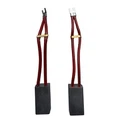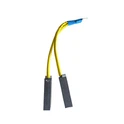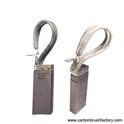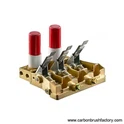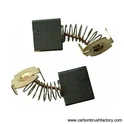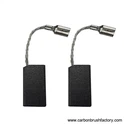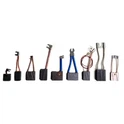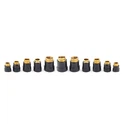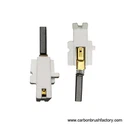Carbon brushes are an indispensable transmission device in various electrical equipment such as motors, electric locomotives, and machine tools. They are mainly used to transmit electrical energy or signals. Carbon brushes are made of conductive materials and insulating materials. After being made into carbon brushes, they need to be processed and quality controlled to produce high-quality, high-precision carbon brushes. The manufacturing process of carbon brushes mainly includes the following processes:
1. Raw material preparation
The raw materials for making carbon brushes mainly include carbon powder, copper powder, binders and lubricants. These raw materials need to be mixed according to a certain proportion and filtered through screens and other processes to ensure the removal of impurities.

2. Molding
The mixed raw materials are pressed into shape, usually using a cold pressing mold, but other molding processes such as injection molding can also be used.

3. Baking
The shaped carbon brush is baked in a high-temperature environment, usually at a baking temperature of about 800°C for about 2 hours, so that the carbon powder and the binder are fully combined.

4. Grinding
Precisely grind the baked carbon brushes to meet the requirements of surface finish and dimensional accuracy.

5. Assembly
Install the ground carbon brush at the corresponding position in the motor. It is usually necessary to add springs and other components to ensure that the carbon brush is in good contact with the rotating parts of the motor.

6. Testing
To test the finished product, it is usually necessary to test the size, resistance, wear amount and other indicators of the carbon brush to ensure that the quality meets the requirements.

The above is the general production process of carbon brushes. Different manufacturers or different products may use different processes and equipment, but the overall process is roughly the same.


